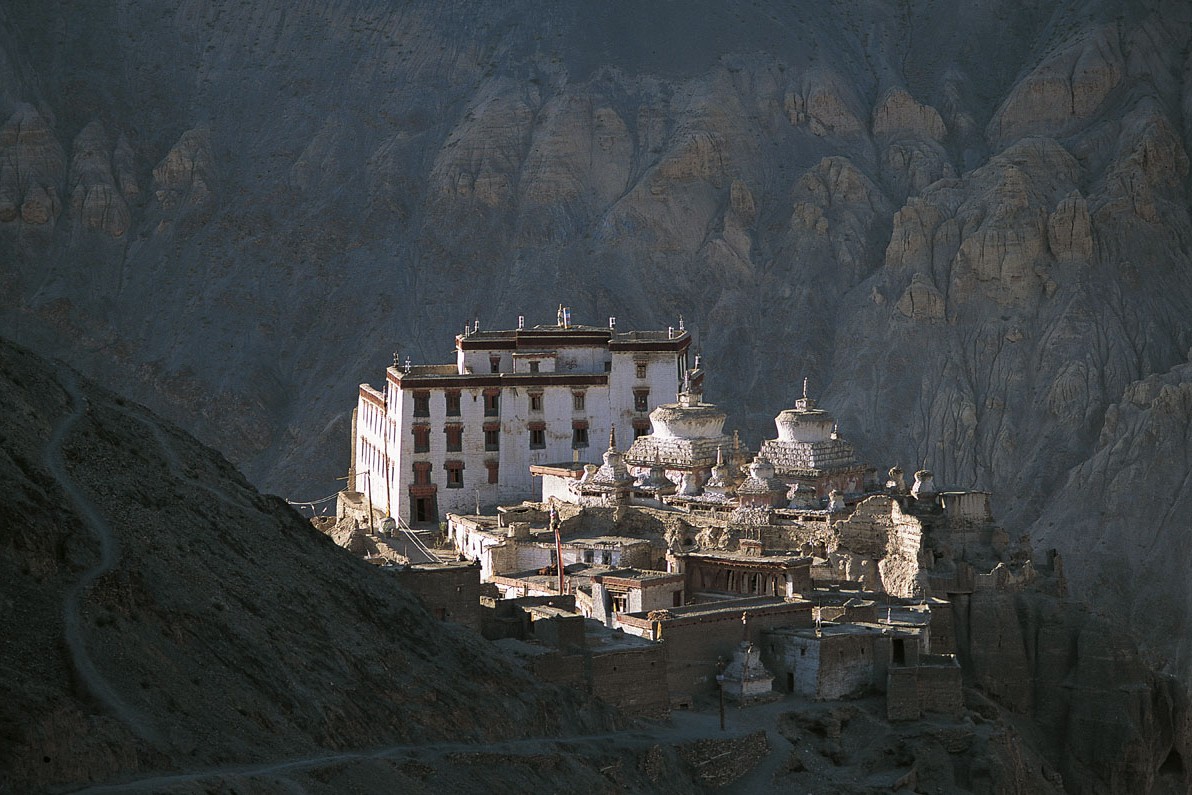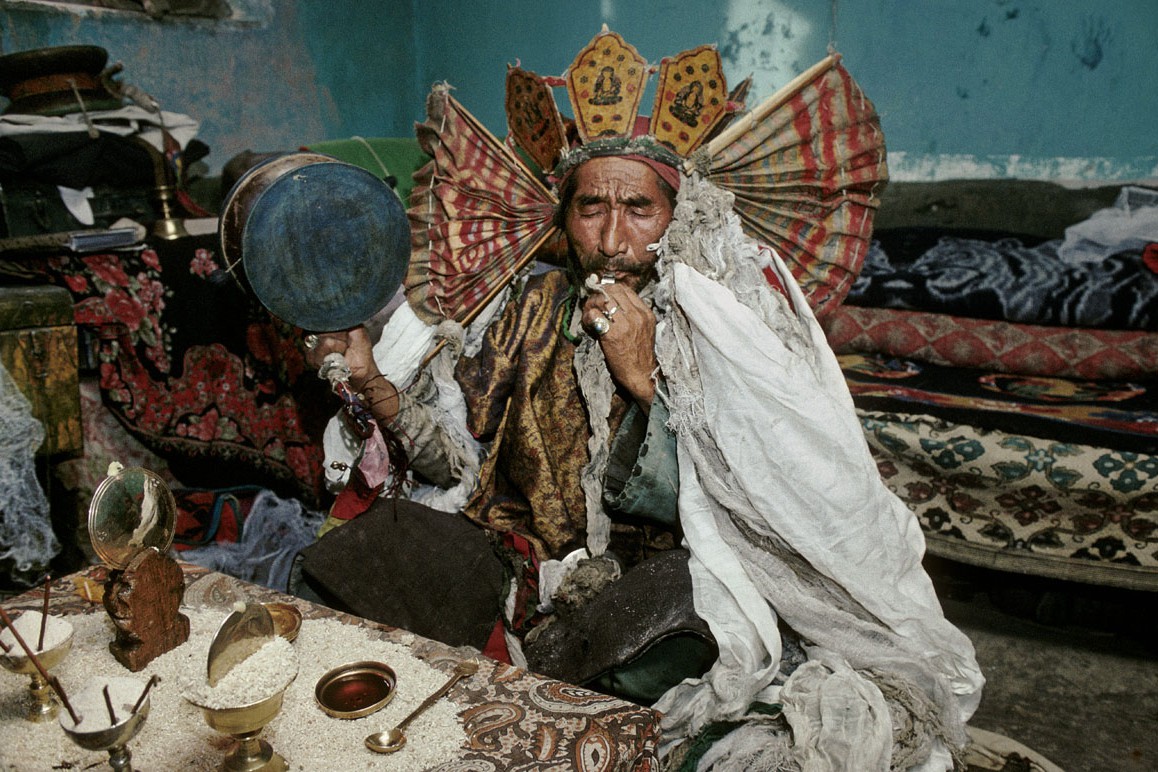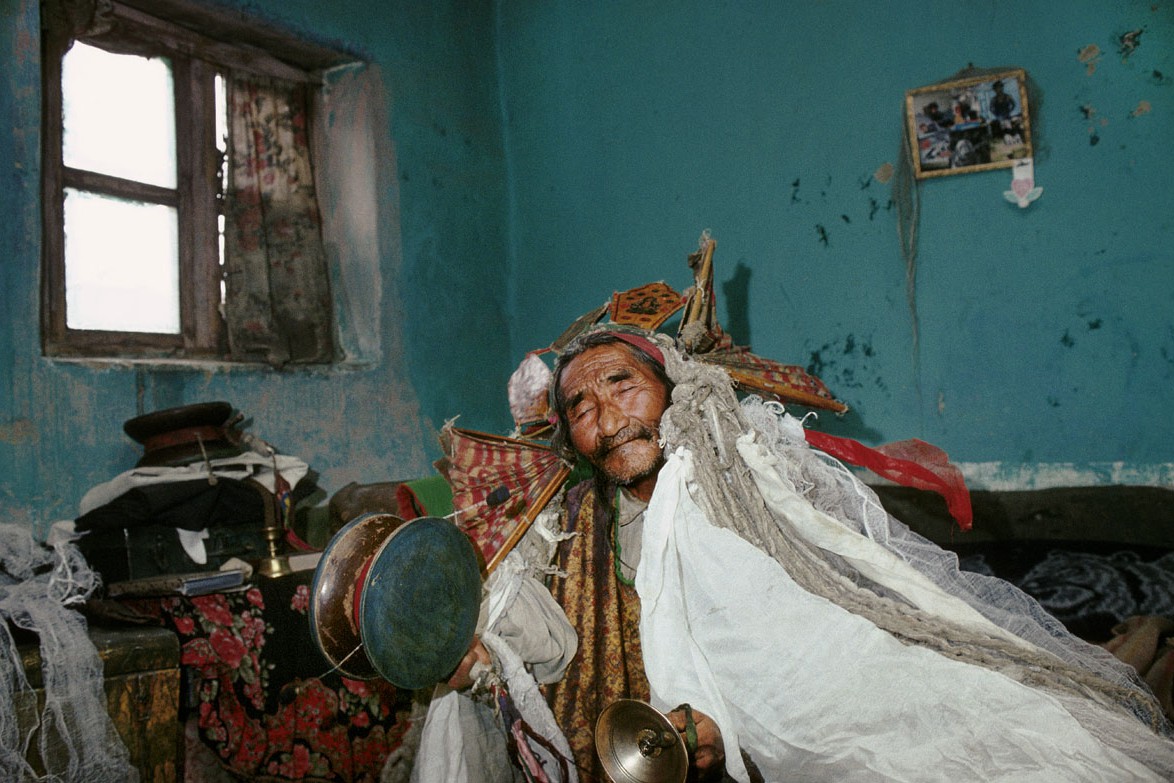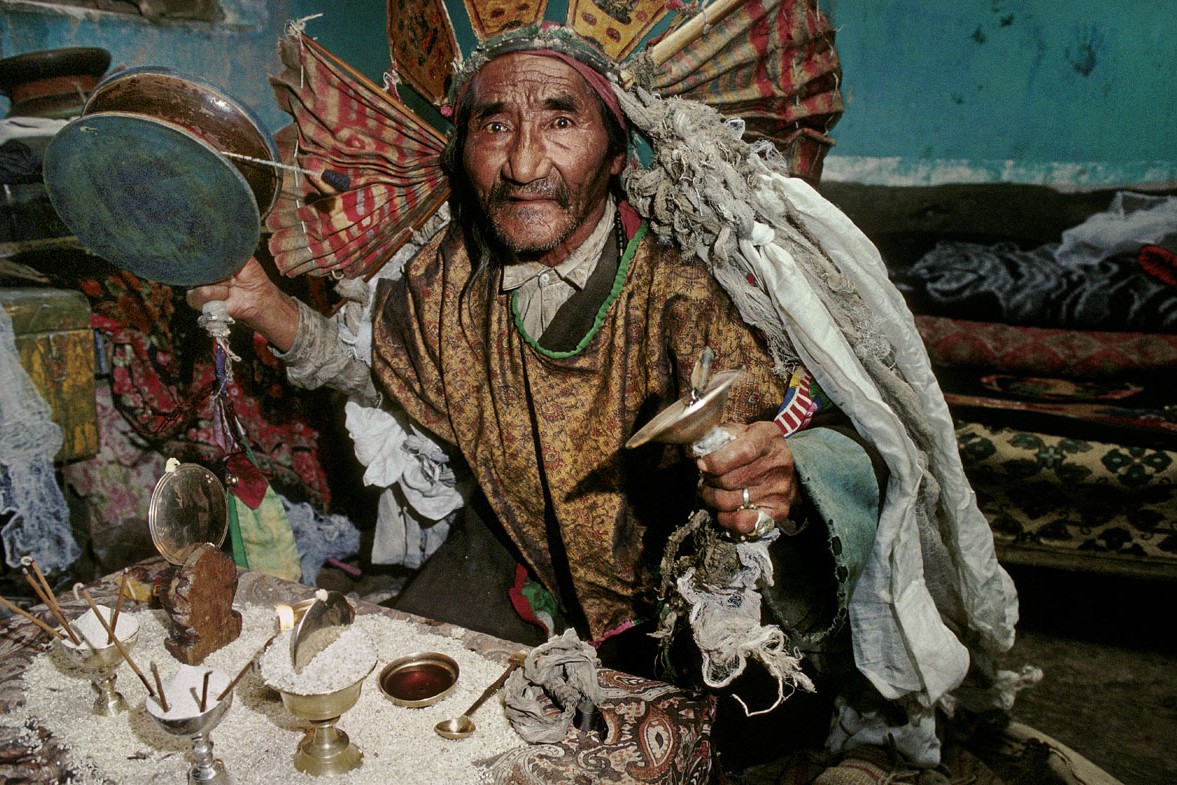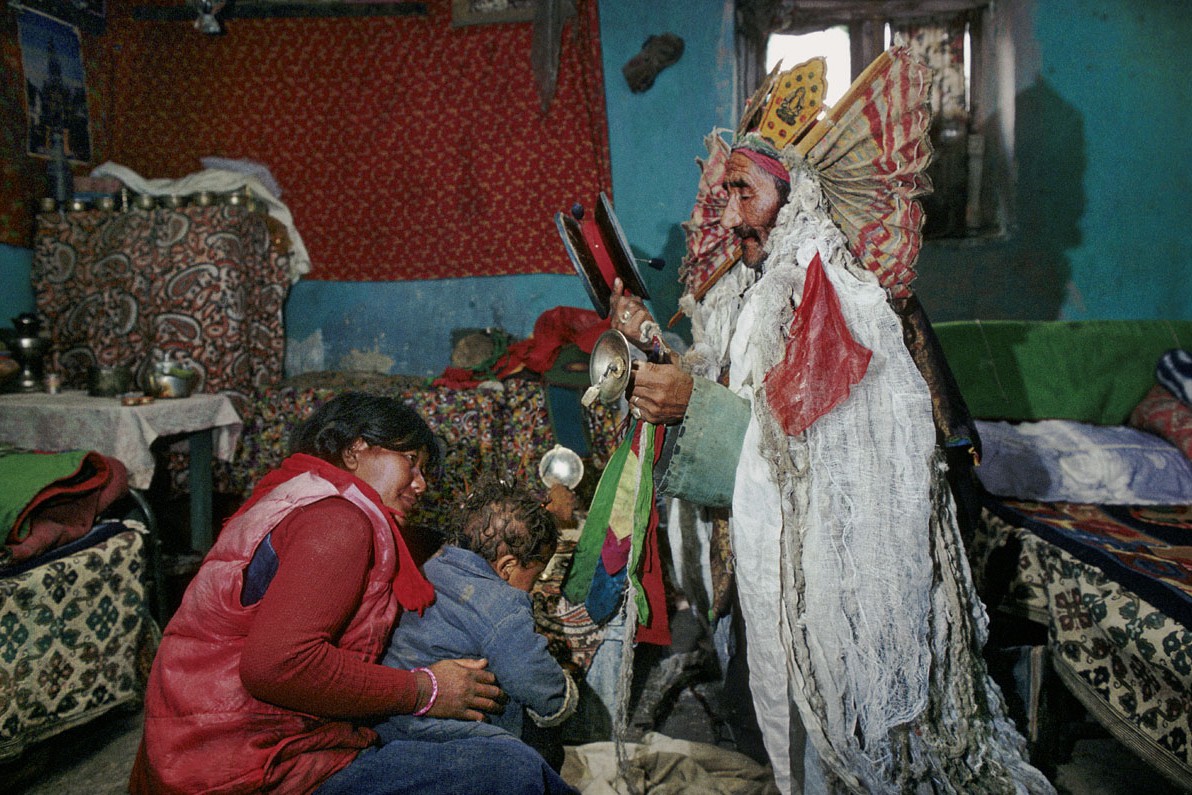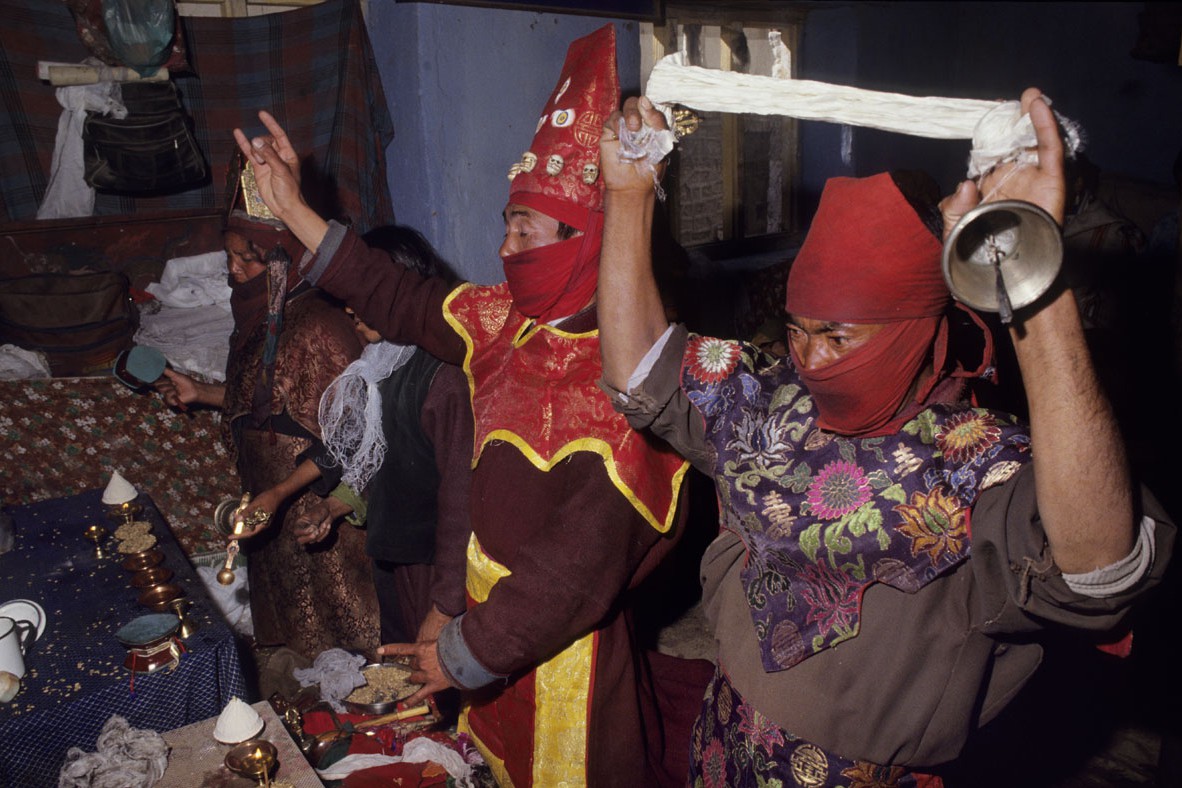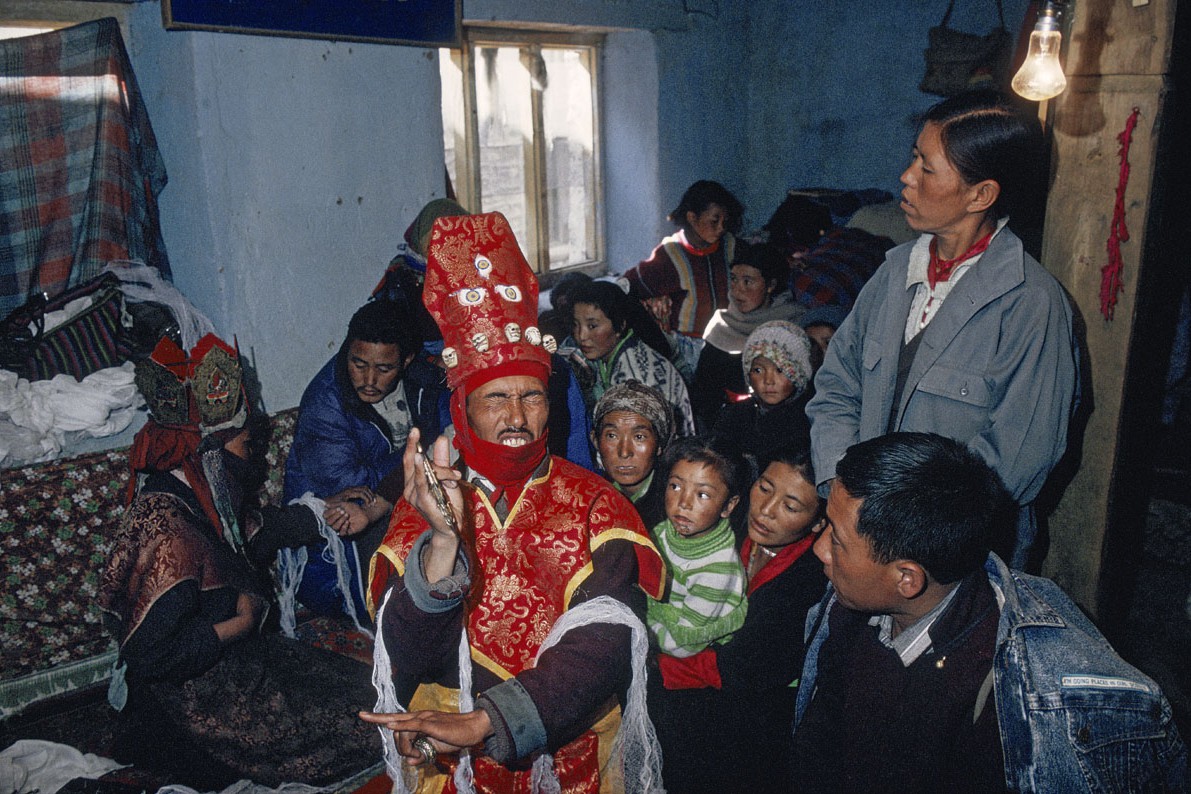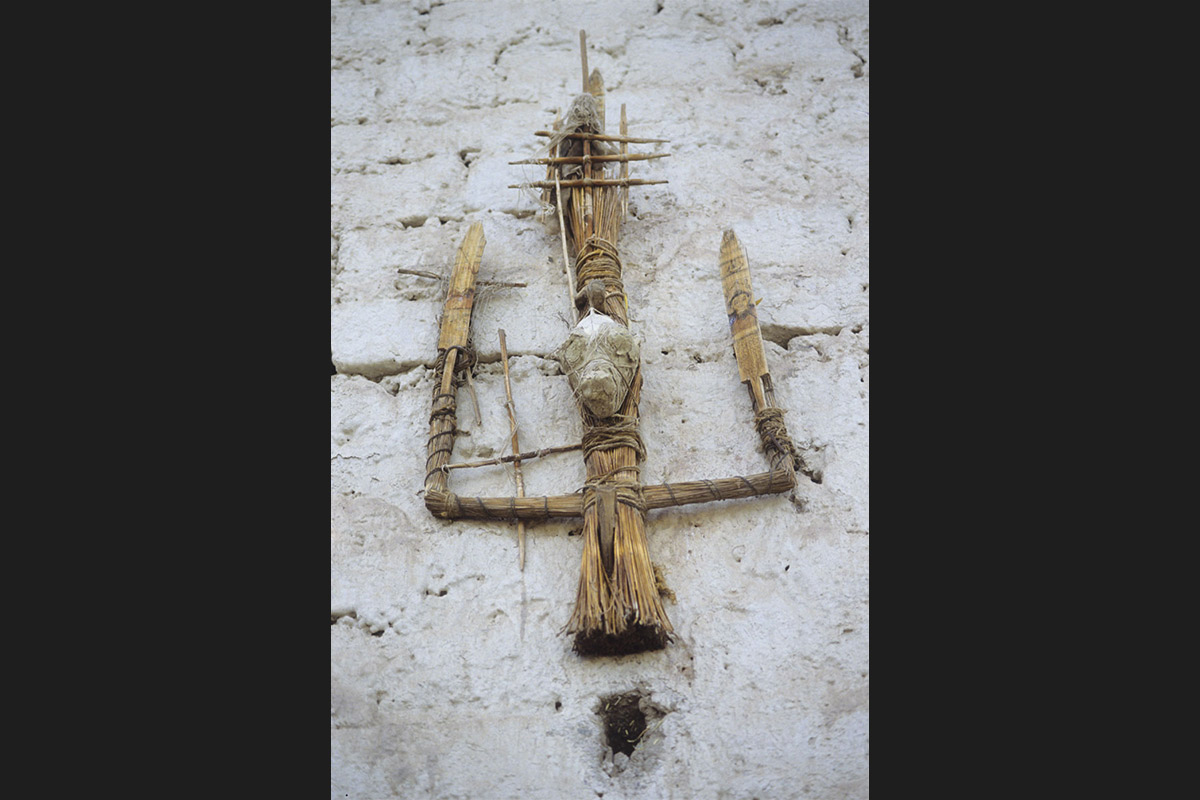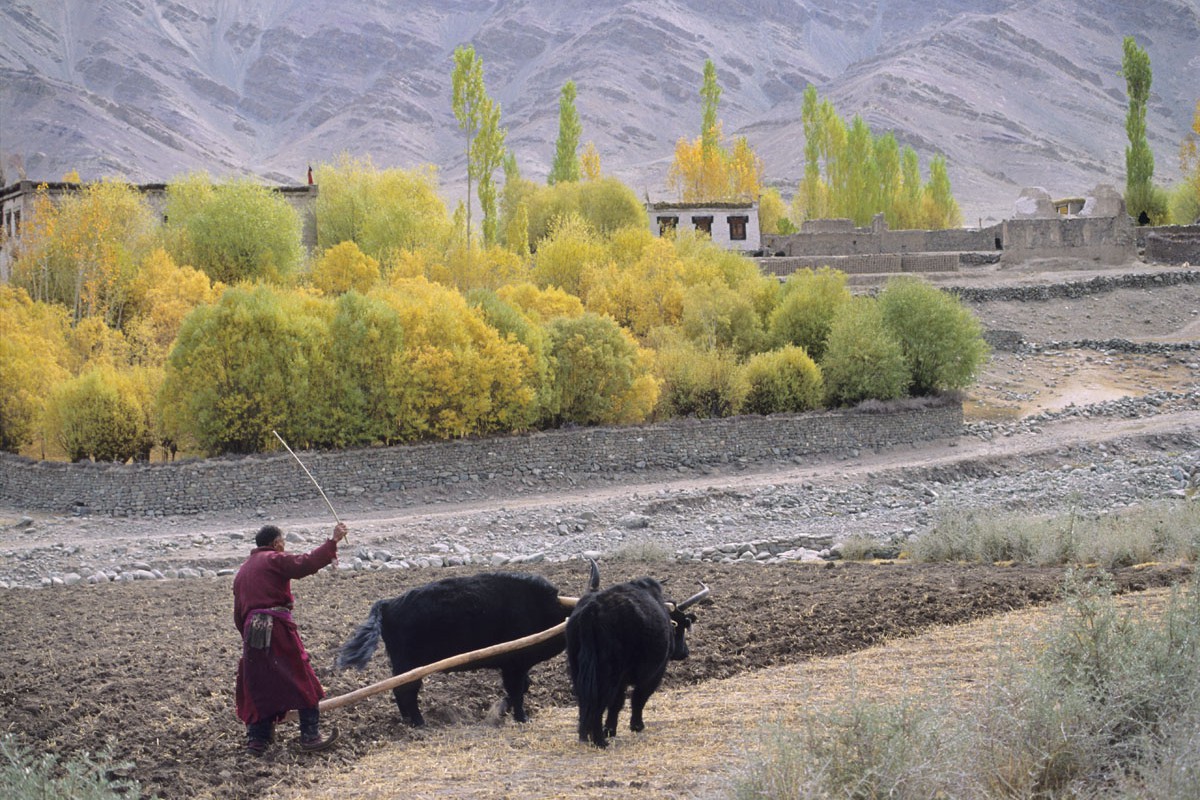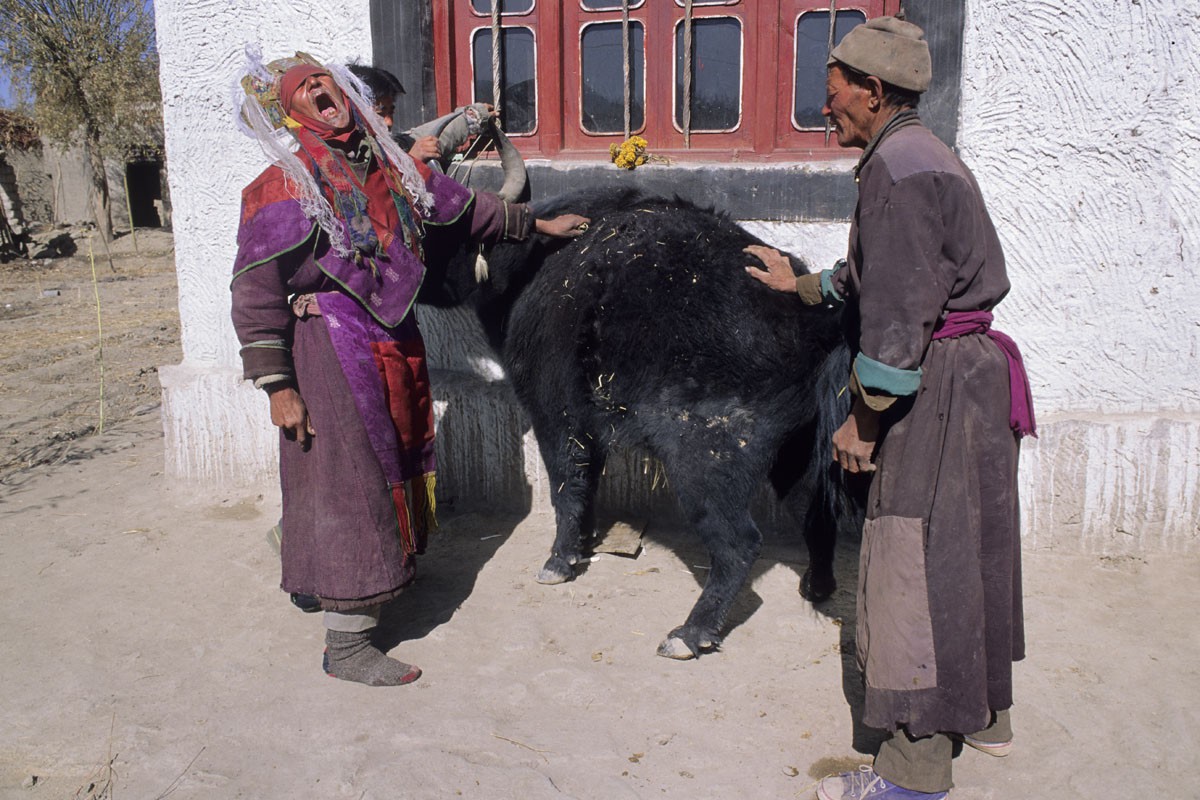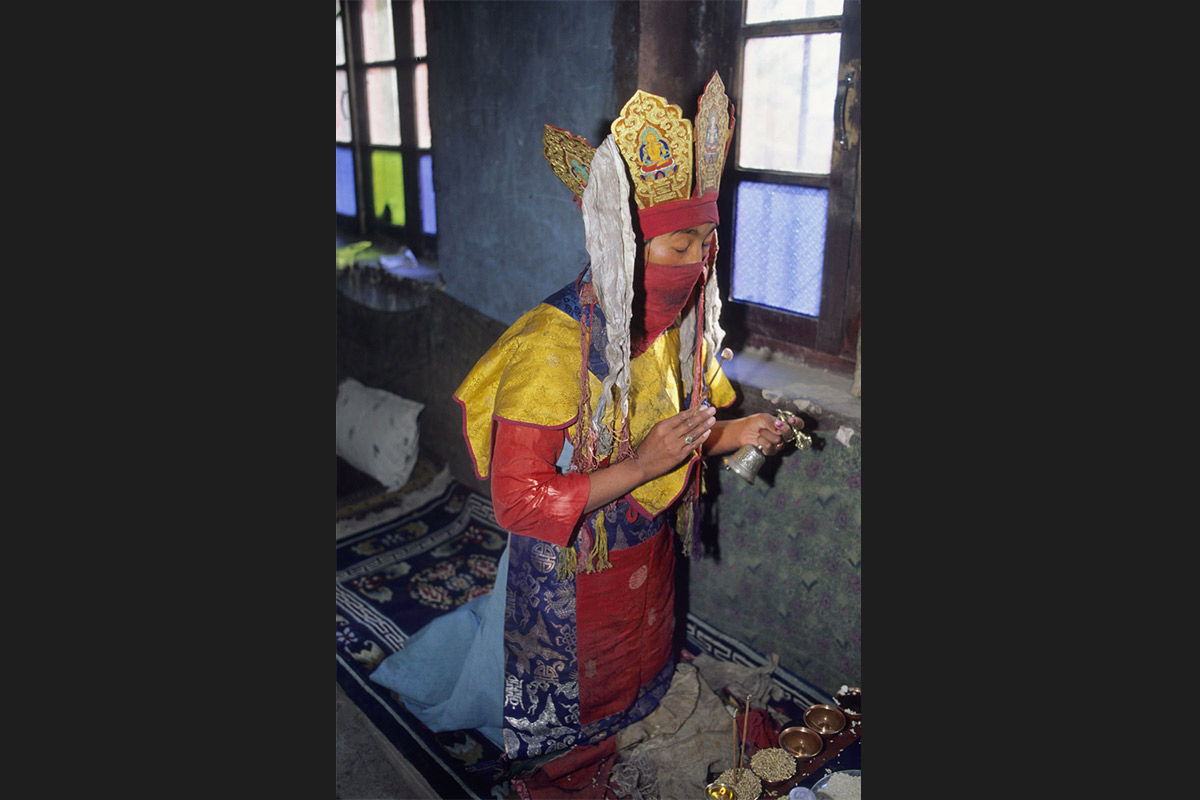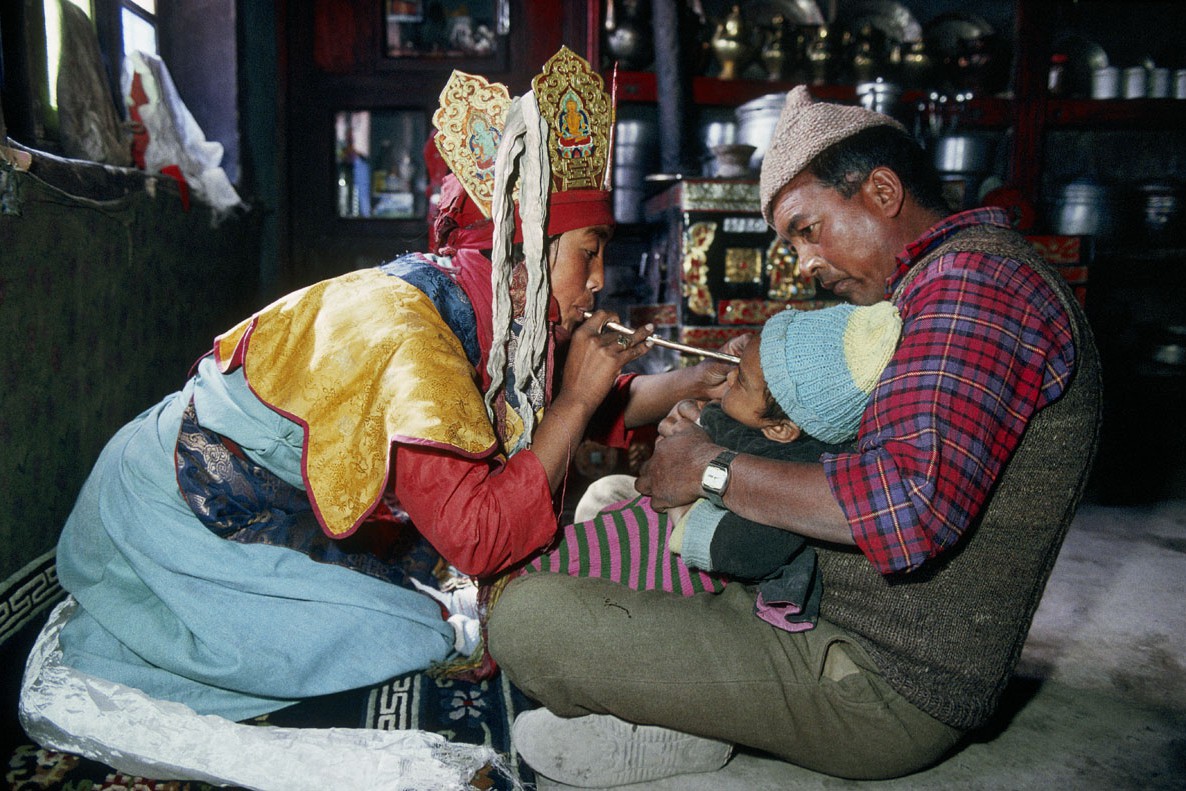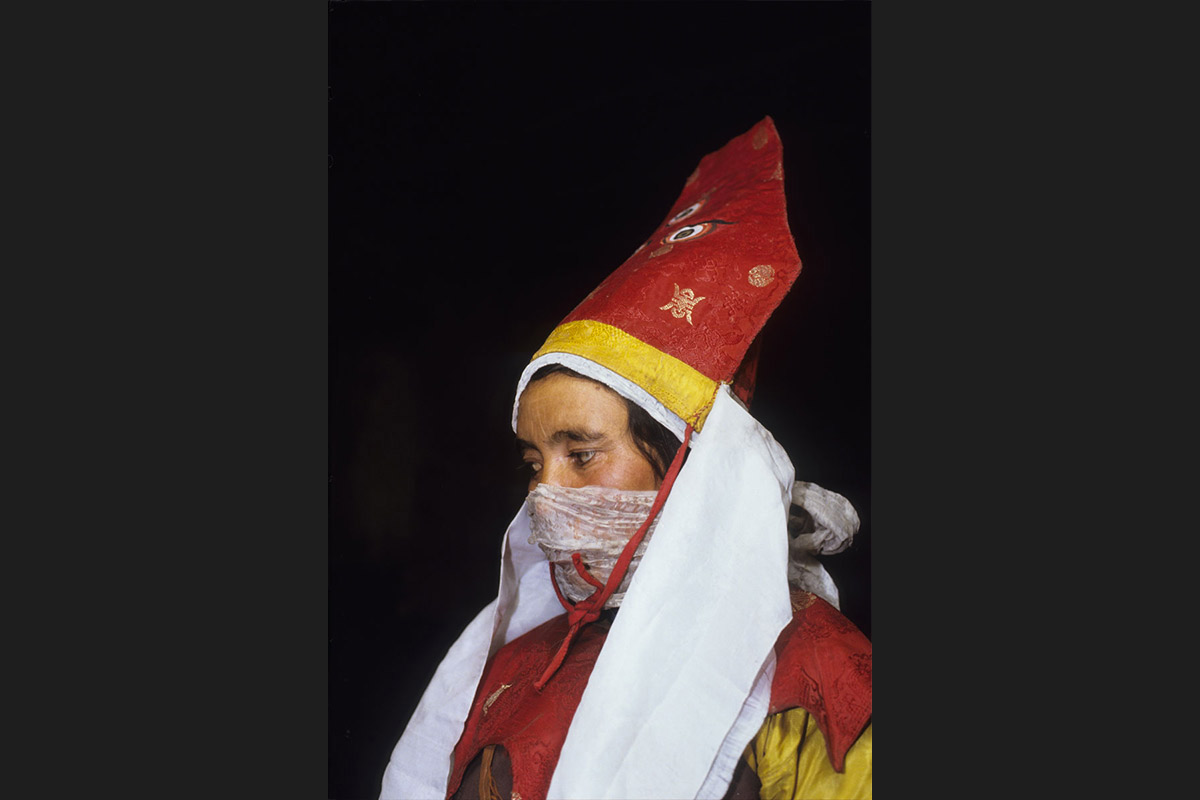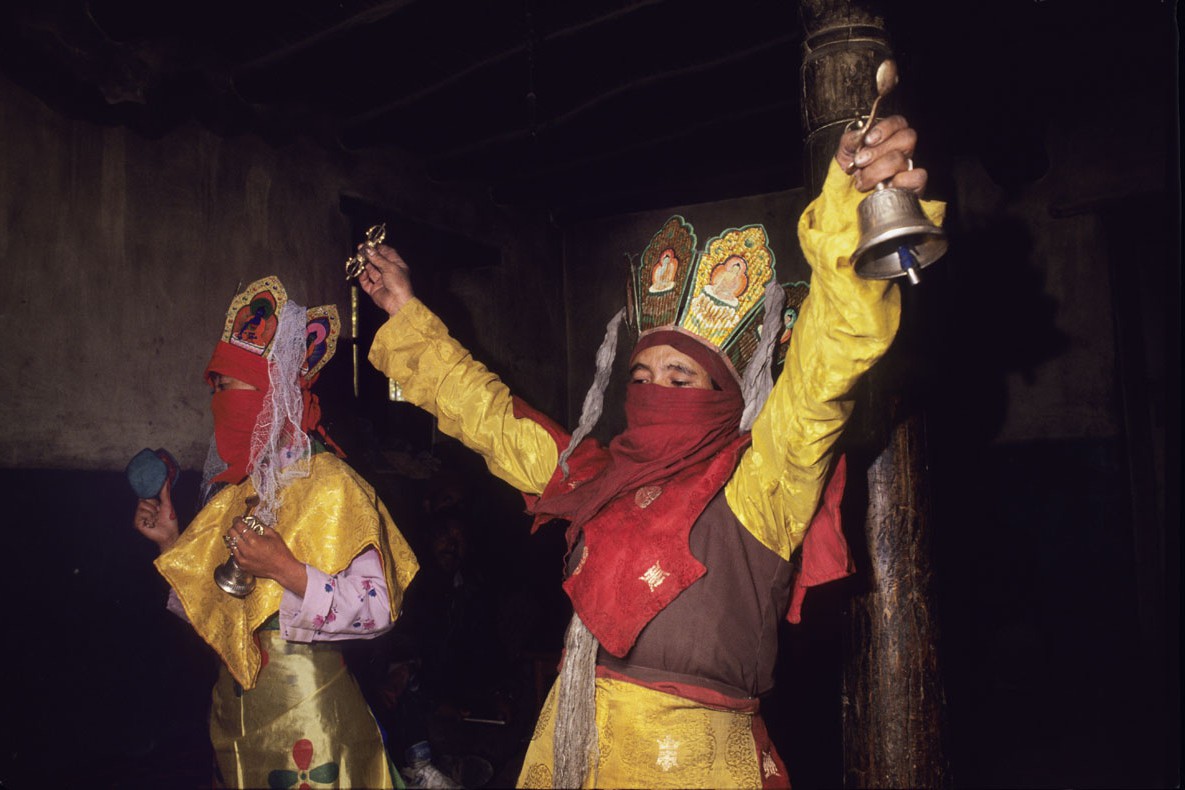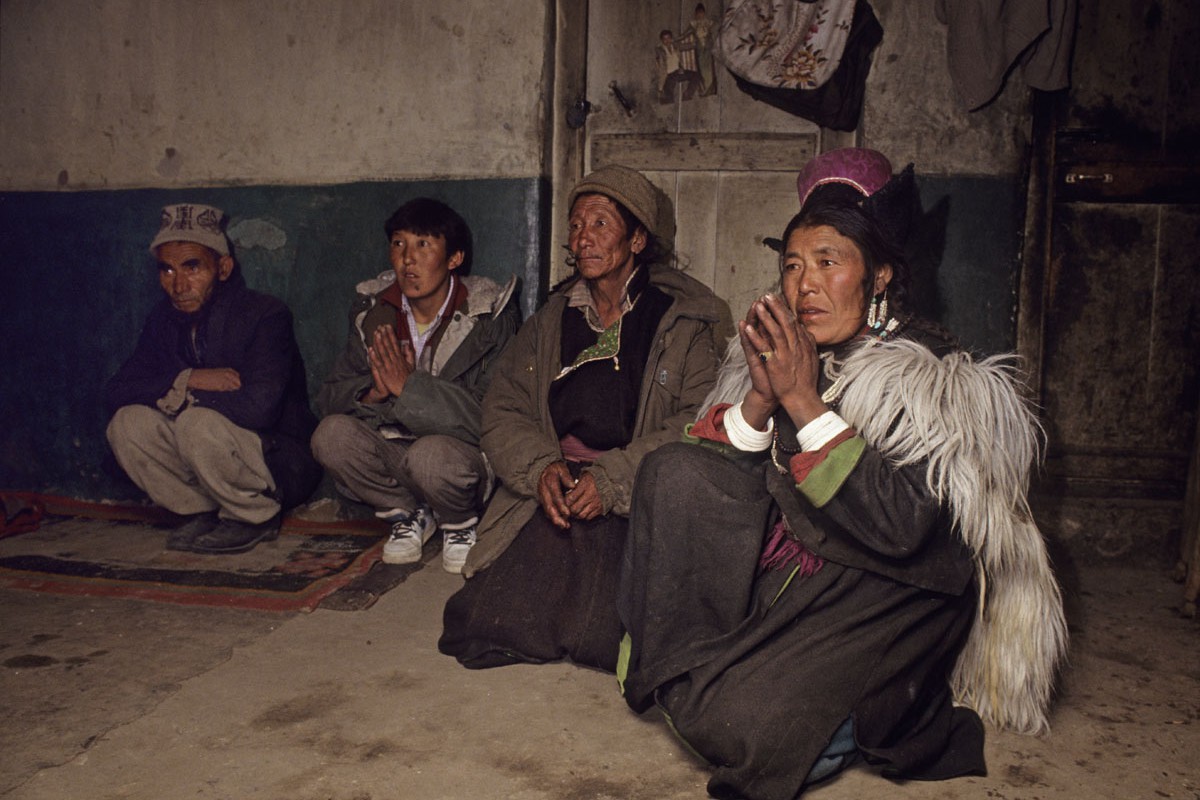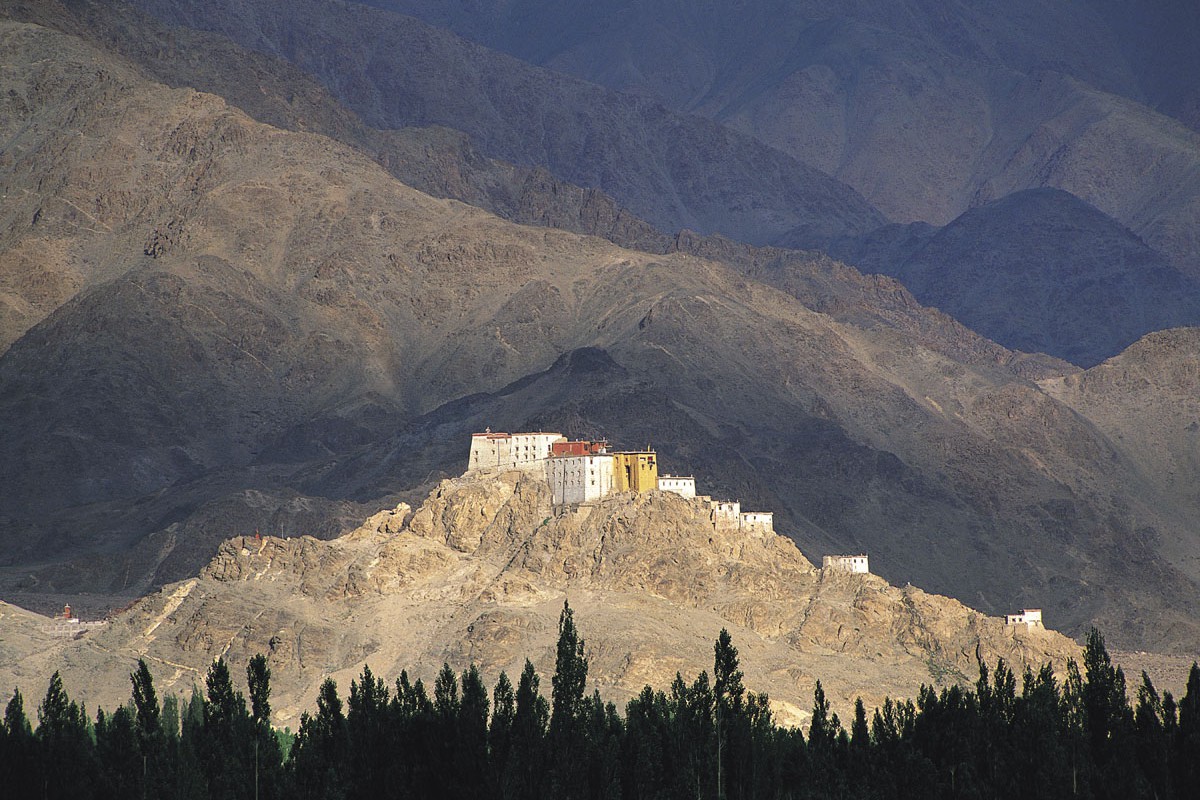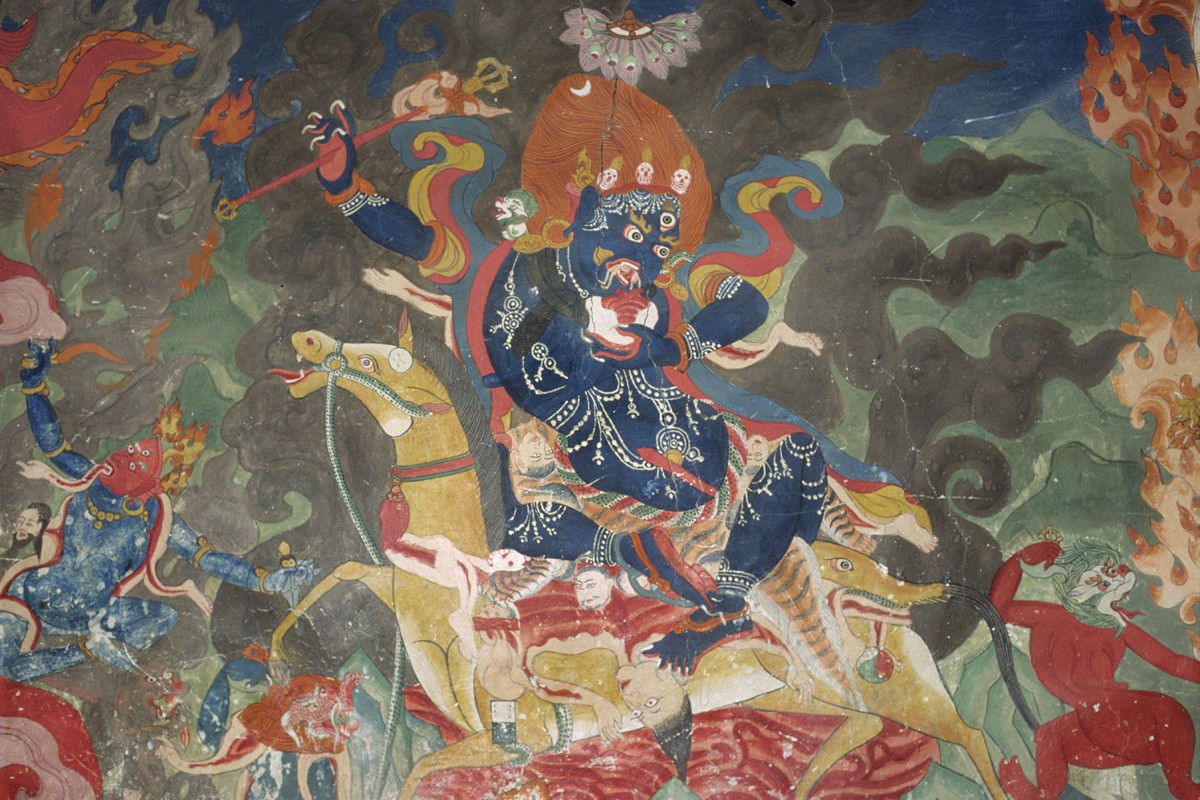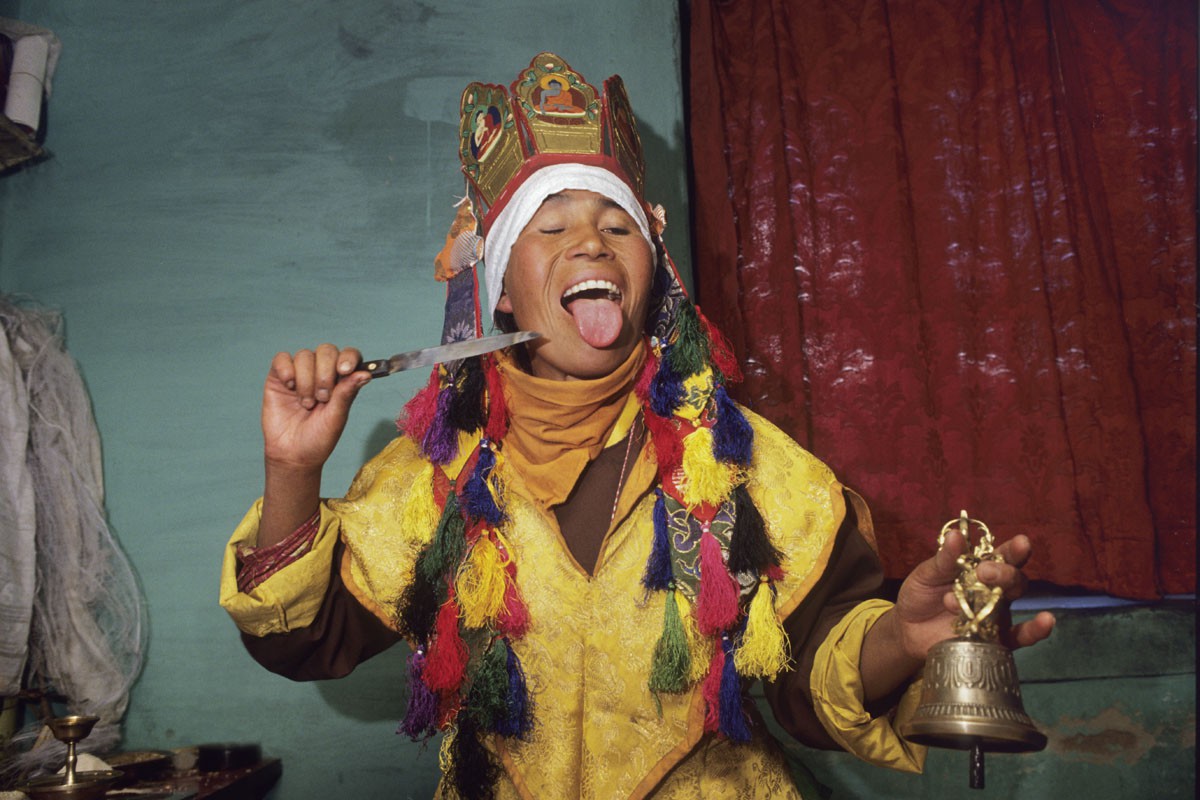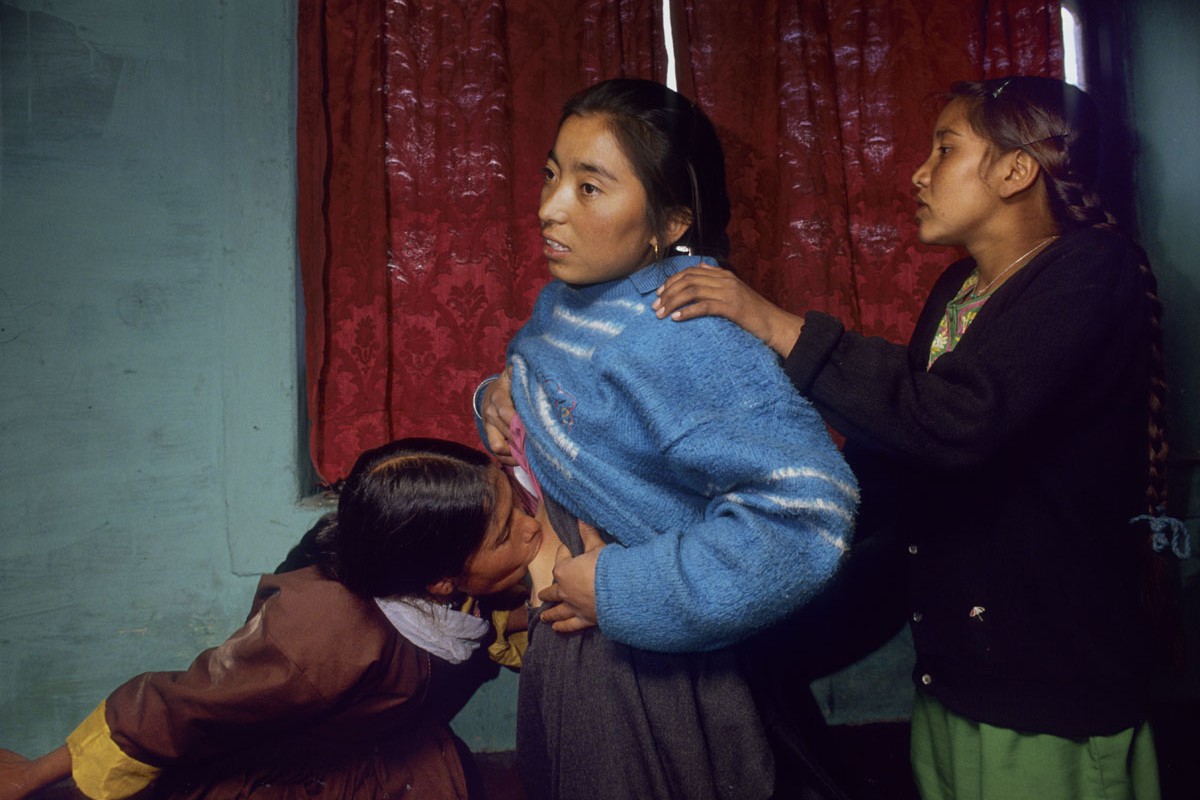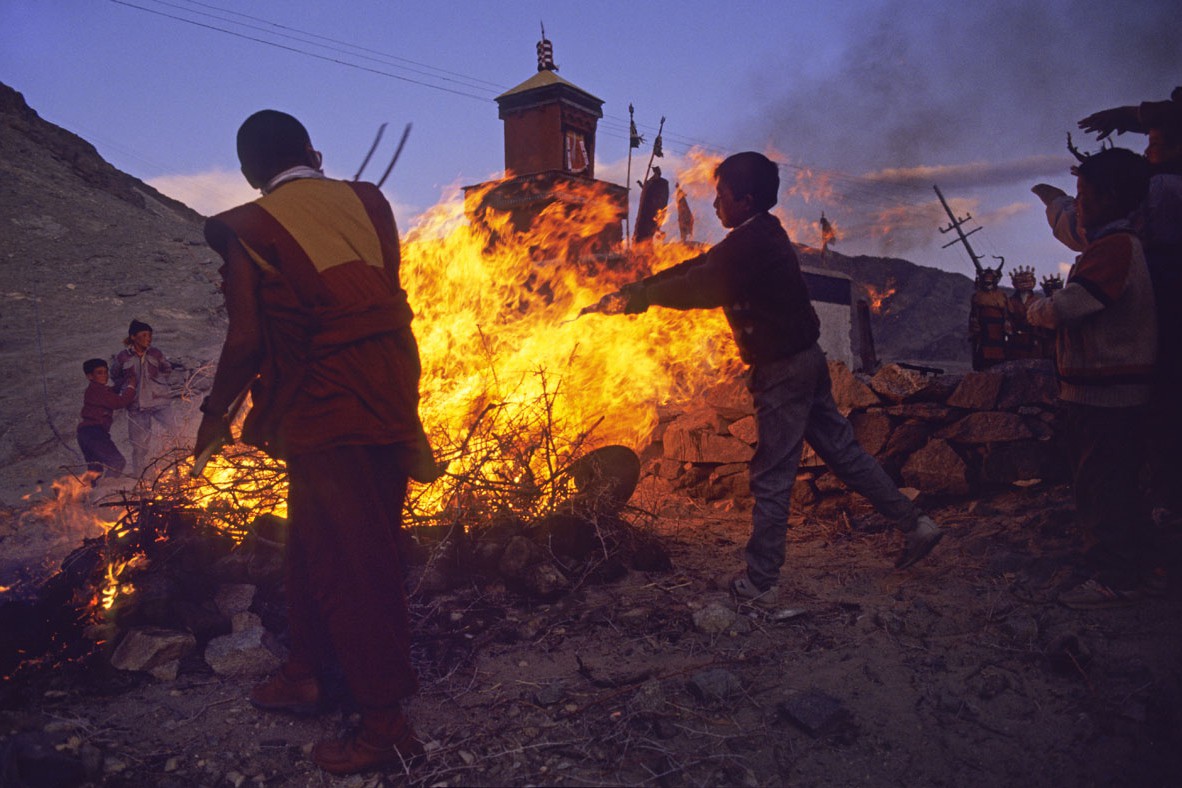The shamans of Ladakh
Characterised by the mastery of fire and the ecstatic voyage of the spirit, shamanism cohabits peacefully with both Islam and Buddhism, the two dominant religions of Ladakh, a small Tibetan enclave in Kashmir to the north of India. It is much present in the small villages of the Indus valley, where shamans officiate on the invitation of the community. Through a trance, always very awe-inspiring, they become gradually inhabited by the divinity they invoke, possessing the gifts of divining and of exorcism, capable of healing, and sometimes curing. As for the extraction of the evil, wether poison of a foreign body, the instruments differ according to those officiating. It may be aspiration through the damaru, the ritual drum, or a torch, especially in the case of delicate operations. Almost all of them use direct suction on the body. The most qualified practise the highly dangerous Mengak. Here, the lhaba or lhamo licks the white hot blade of a knife planted in the embers of a stove to project a spray of saliva with supposedly curative power on the parts to be treated.The shamans, however, do not claim infallibility and willingly send their patients to see a Tibetan or a western doctor, when they consider that they are not themselves competent. They ask for no remuneration and offerings of food and money are completely discretionary. One becomes a shaman through divine election and God’s gift cannot be bought…
 Christophe Boisvieux
Christophe Boisvieux